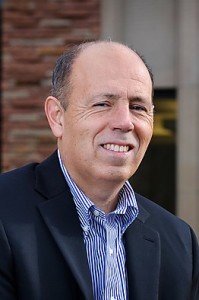New York Times contributing columnist Paul F. Campos made a splash on April 4 when the paper published his op-ed attributing ballooning higher education costs to widespread administrative bloat. Campos, who has first-hand insight on collegiate spending trends as a faculty member of the University of Colorado, describes the areas in which non-academic spending has skyrocketed over the past decade and dismisses the claim that diminishing public support for education has bound administrators to ratchet up tuition year-over-year.
Campos expressed his skepticism of administrators’ narrative about ruthless spending cuts, pointing out that “public investment in higher education in America is vastly larger today than it was during the supposed golden age of public funding in the 1960s.” He continued by noting that the generous increase in state and federal support had far outpaced inflation, now totaling about ten times the 60s level in inflation-adjusted dollars.
In Campos’ telling, dubious accounting enables universities to perpetuate the “draconian cuts” defense: administrators frequently referred to what were in fact large year-to-year increases as cuts when spending in a particular area didn’t keep one-to-one pace with increased enrollment.
But his clearest evidence that another force must be driving tuition increases is a head-to-head comparison of administrative versus faculty growth. “An analysis by a professor at California Polytechnic University, Pomona, found that, while the total number of full-time faculty members in the C.S.U. system grew from 11,614 to 12,019 between 1975 and 2008, the total number of administrators grew from 3,800 to 12,183 — a 221 percent increase.”
On April 6, The Chronicle of Higher Education published a round-up of journalists and administrators’ reactions to Campos argument, most of which claimed that he had underemphasized the dip in per-student spending. “In a blog post Sunday, [Urban Institue fellow Sandy Baum] writes that, adjusted for inflation, state appropriations per student have declined by 18 percent in the past 30 years, and are 29 percent lower than their 1988-89 peak,” described Chronicle reporter Andy Thomason of one of many similar reactions recalled in the article. Though the chorus of responses form a compelling rebuttal to Campos’ evaluation of subsidy increases, it’s telling that none of his critics can find any reason to doubt his analyis of college’s administrative spending, which is more clearly demonstrable and forms the heart of his argument.


Be the first to comment on "New York Times Op-Ed Blasts Colleges’ Administrative Spending Increases"